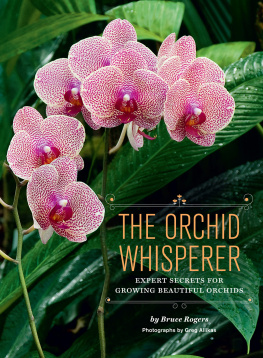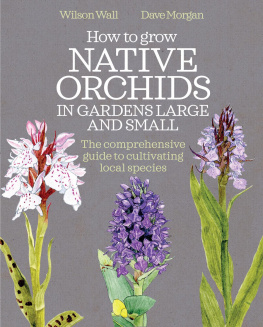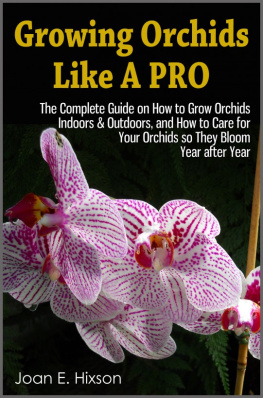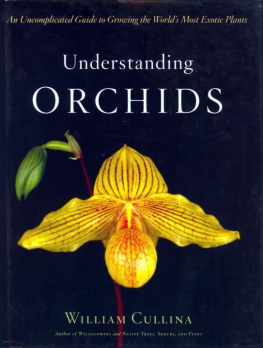Philip Seaton - The Kew Gardeners Guide to Growing Orchids
Here you can read online Philip Seaton - The Kew Gardeners Guide to Growing Orchids full text of the book (entire story) in english for free. Download pdf and epub, get meaning, cover and reviews about this ebook. year: 2019, genre: Children. Description of the work, (preface) as well as reviews are available. Best literature library LitArk.com created for fans of good reading and offers a wide selection of genres:
Romance novel
Science fiction
Adventure
Detective
Science
History
Home and family
Prose
Art
Politics
Computer
Non-fiction
Religion
Business
Children
Humor
Choose a favorite category and find really read worthwhile books. Enjoy immersion in the world of imagination, feel the emotions of the characters or learn something new for yourself, make an fascinating discovery.

- Book:The Kew Gardeners Guide to Growing Orchids
- Author:
- Genre:
- Year:2019
- Rating:5 / 5
- Favourites:Add to favourites
- Your mark:
- 100
- 1
- 2
- 3
- 4
- 5
The Kew Gardeners Guide to Growing Orchids: summary, description and annotation
We offer to read an annotation, description, summary or preface (depends on what the author of the book "The Kew Gardeners Guide to Growing Orchids" wrote himself). If you haven't found the necessary information about the book — write in the comments, we will try to find it.
The Kew Gardeners Guide to Growing Orchids — read online for free the complete book (whole text) full work
Below is the text of the book, divided by pages. System saving the place of the last page read, allows you to conveniently read the book "The Kew Gardeners Guide to Growing Orchids" online for free, without having to search again every time where you left off. Put a bookmark, and you can go to the page where you finished reading at any time.
Font size:
Interval:
Bookmark:
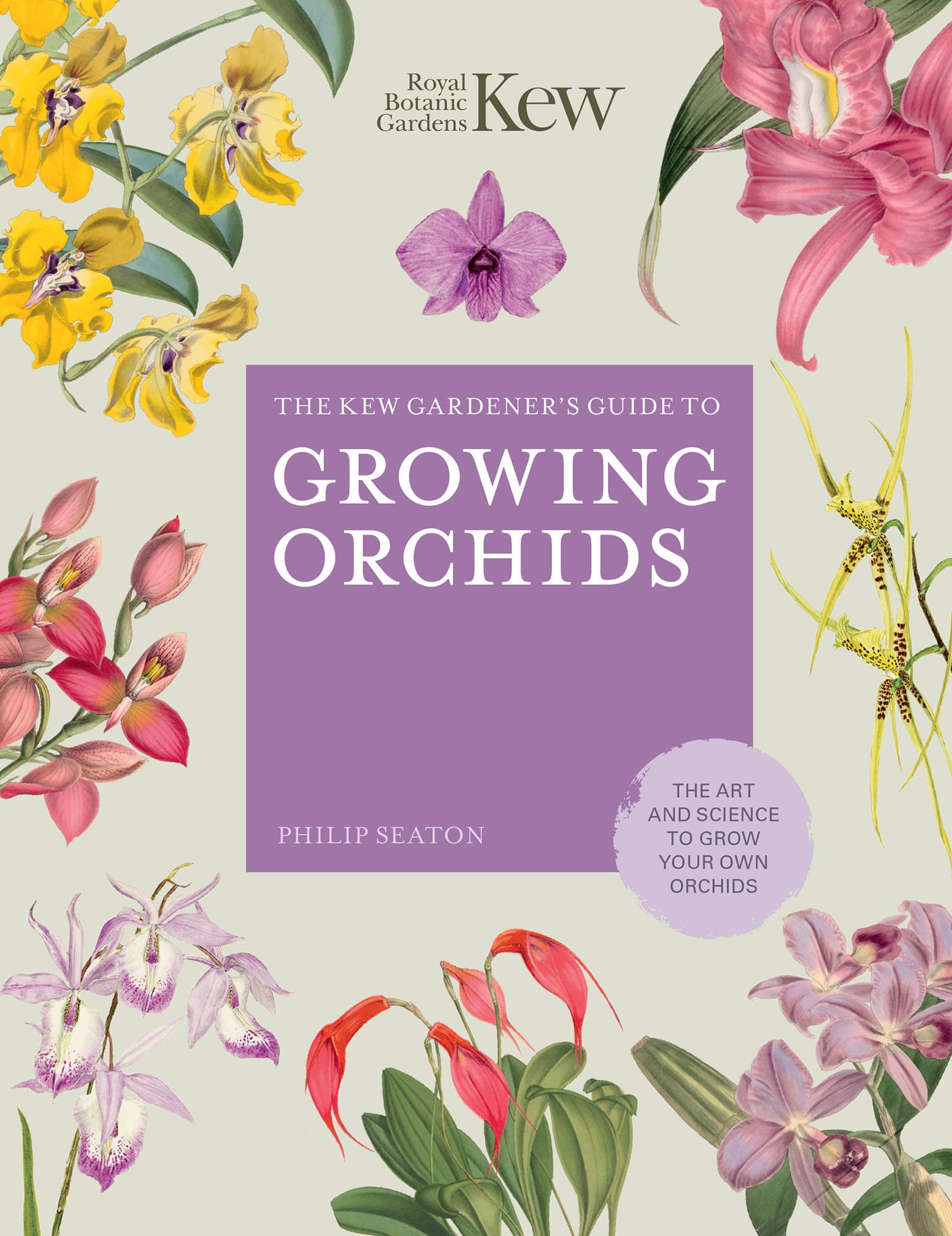


GROWING ORCHIDS
THE ART AND SCIENCE TO GROW YOUR OWN HOUSE PLANTS
PHILIP SEATON



Orchids can be grown with a wide range of other plants to produce an attractive effect. Here at the Kew Orchid Festival, moth orchids can be seen peeking through the foliage of Hoya linearis and various ferns, bromeliads and begonias.
Why this obsession with orchids? Clearly one of the attractions is the spectacular diversity of their flowers, ranging from large and showy cattleyas and cool elegant sprays of moth orchids (Phalaenopsis) to tiny, jewel-like Lepanthes. With more than 26,000 species identified to date (and probably many more to come), orchids can be found growing on all continents apart from Antarctica. The Orchidaceae (the orchid family) makes up around 9 per cent of the worlds plant biodiversity, with the majority of species living in the tropics. Some have evolved to grow high in the forest canopy, where they are subject to the full power of the suns rays, while others grow on the humid and shady forest floor. Yet more inhabit the more temperate climes of English meadows and South African fynbos.
Orchids are beautiful, magical, exotic and exude charisma. Often, however, they are thought to be difficult to grow. There are, of course, species that can be challenging, attract the specialist grower and are considered to be strictly greenhouse subjects. Over recent years, however, it has become increasingly apparent that a wide range of orchids can be successfully grown in the home. Indeed, they are often much tougher than the average house plant.
On 17 February 1899, the auctioneers Protheroe & Morris of London offered 100,000 plants of Princess Alexandras oncidium (Oncidium alexandrae) for sale. Today, the scale of orchid imports in the nineteenth century are difficult to comprehend. Literally millions of orchids must have been removed from the wild, vast numbers dying in transit even before they reached European shores. Nurserymen such as Frederick Sanders in the UK housed their imports in vast ranges of greenhouses, sending collectors around the world in search of ever more novel specimens. Many of those intrepid orchid hunters died in pursuit of their goals: some of tropical diseases such as malaria and yellow fever; others suffered accidental deaths; and some were murdered.

Miltonia moreliana, with its dark plum sepals and petals, is particularly desirable; once considered a variety of M. spectabilis, it is now a species in its own right.
This was a time of orchid mania, when orchids were largely the preserve of the rich, who sometimes paid vast sums of money for particularly desirable specimens, and assembled large private collections containing thousands of plants. Initially, growers did not understand how to cultivate these treasures. Out of those that did survive their long sea voyages, large numbers perished in hot and steamy stove houses, even though many came from cool and misty cloud forests. As information became more widely available, orchids began to be cultivated in conditions better reflecting their natural habitats.
Today, those enormous collections of orchids looked after by teams of gardeners for wealthy patrons are a distant memory. With a few notable exceptions such as botanical gardens, few large private collections remain. Instead, today orchids are within the reach of everyone.

Cambria orchids are increasingly available in almost every colour of the rainbow, including a vibrant orange. There is something for everyone.
Moth orchids (Phalaenopsis), once thought to be an orchid strictly for the warm greenhouse, are probably the worlds most popular pot plant. Millions are grown in commercial nurseries for sale in retail outlets. Once you have cut your orchid-growing teeth, on a moth orchid perhaps, there is a wide range of interesting species and hybrids available to tempt the discerning enthusiast, and something to suit everyones pocket.
The pages that follow include many of the commonly grown species and hybrids, together with a generous sprinkling of some of the more rarely encountered specimens that you may wish to search out. They are, however, just a sample of the enormous diversity of plants that make up the orchid family. Be warned orchids are addictive, and once hooked it is likely that, in common with growers of old, you will want to find and grow ever more examples of these botanical treasures.
A word about names
Aside from being unfamiliar, as our understanding of the relations between plants moves forward it is inevitable that, much to the chagrin of growers, the names of orchid species sometimes change: Odontoglossum suddenly becomes Oncidium, Sophronitis becomes Cattleya. To avoid confusion, the most up-to-date terms have been used throughout this book and, where appropriate, the older names included in brackets.
Hybridizers are continually striving to improve on nature. To date, more than 70,000 crosses have been registered with the Royal Horticultural Society (RHS), the international body responsible for naming orchid hybrids. Bigger flowers, more flowers, rounder flowers, different colours, spots and stripes fashions come and go. The public is always looking for something new and exciting. Windowsill orchids should be tolerant of a wide range of temperatures, be vigorous and easy to grow.

Despite its scientific name of Disa uniflora, pride of Table Mountain often has two or more spectacular, almost fluorescent, blooms.
Orchids are notoriously promiscuous. Because they often rely on specific pollinators, they tend to have few barriers in nature to cross-pollination. Not only is it frequently possible to make crosses between different species in the same genus, but it is also often feasible to create crosses between species in different, related genera. This can make the naming of such intergeneric crosses difficult. It is simple enough when crossing a Laelia with a
Font size:
Interval:
Bookmark:
Similar books «The Kew Gardeners Guide to Growing Orchids»
Look at similar books to The Kew Gardeners Guide to Growing Orchids. We have selected literature similar in name and meaning in the hope of providing readers with more options to find new, interesting, not yet read works.
Discussion, reviews of the book The Kew Gardeners Guide to Growing Orchids and just readers' own opinions. Leave your comments, write what you think about the work, its meaning or the main characters. Specify what exactly you liked and what you didn't like, and why you think so.

